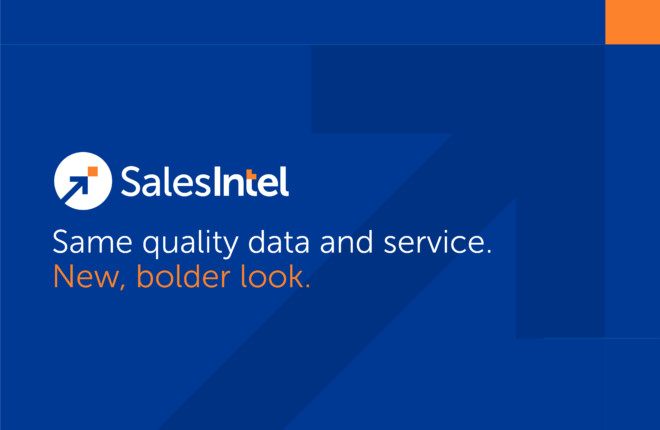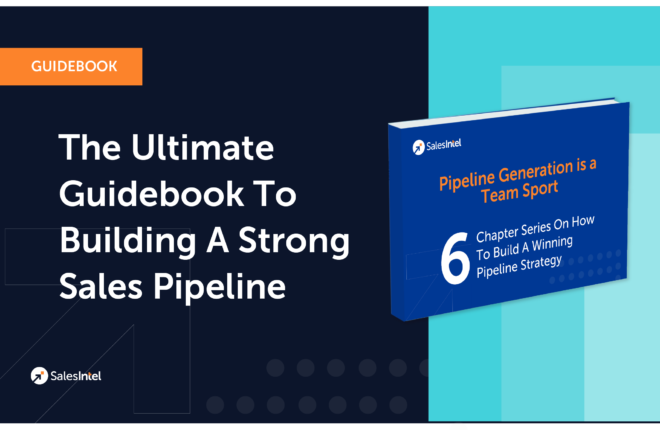In previous years growth was the top priority until the middle of 2022. Every company focused on growing exponentially, and the market rewarded them. The economy was rewarding growth ahead of efficiency or profitability. But things have changed.
When you hit a market like we’re seeing today, efficiency matters most. Questions turn into: Am I making good use of the money? Am I protecting my best customers?
Our experience here at SalesIntel is that we’re fundamentally remaining static in our investments from 2022 and 2023, but we’re seeing massive gains in efficiency. The same dollar amount is getting us more value.
What do we mean by pipeline efficiency?
I first want to discuss what we mean when we say pipeline efficiency.
A lot of people immediately think, “more pipeline.” I make my pipeline bigger, right? And that’s obviously part of the equation. But often the more challenging part is to get more to make it through. What if you started with what you have today? Instead of adding more participants to the race, you’re going to get more deals across the finish line.
Focus on your Circles
I think of pipeline as concentric circles. The pipeline I can close most confidently and quickly and have the highest retention will be at the center of the bullseye—the absolute perfect fit.
If I can get more of that pipeline, it stands to reason I’ll get more efficient. And then it goes out from there. It’s still a good prospect, but it’s maybe not a decision-maker. Or perhaps the account is a good fit but not a perfect fit. Maybe they’re a good account, but they’re not currently in the market, and so on, and you keep going out from there.
Many people try to make their circle as big and wide as possible, and that’s where you lose profitability. You waste money!
You’re better off from an efficiency standpoint starting with making sure you know those concentric circles and understanding them in a quantifiable way. Then efficiency becomes not just making the pipeline bigger but making your pipeline’s “sweet spot” bigger. You’re honing in on what you need and who to talk to. Once you find a prospect that is a perfect fit, put your best resources into it and work hard to win it. A prospect that is a moderate fit might have a little less effort – maybe you don’t need your highly trained people on it. And then, everything else is opportunistic – try to close it if you can.
You don’t treat each one of those elements of the concentric circle the same, right? That’s where you lose efficiency. Efficiency is about increasing pipeline, but more importantly, increasing pipeline with your ideal customer, where you’re more likely to win by targeting and focusing on it with your content.
A 5x Efficiency Play
There are a lot of ways to reach that 5x efficiency level, but I’ve broken it down into three steps.
Step One
Look at your pipeline today, but if you can’t assess its quality, it’s really hard to know where you stand. So, step number one is to understand and identify your ideal customer. Create those segments that were described in those concentric circles, and then segment your own data and leverage our data to support it.
Look at the closed won in your Salesforce and at closed lost. Those are two segments. Then look at customers’ futures, look at customers who retain and what customers expand. Those segments are what we did at SalesIntel!
Then when you analyze, size those segments against some of the internal data.
- How big is the company?
- What’s the revenue?
- How much funding do they have for firmographic data?
- Where are they geographically?
- What type of software do they have deployed?
- What are some intent signals that you might use for that company?
All that data can be used to describe your ideal customer.
Step Two
If you haven’t done the work to know where you really have the best fit, you can guarantee your content isn’t ideal. You’re either being too generic or not speaking to them in a way that will spark their attention.
Next is to hone your messaging in your content to that ICP.
Focusing on verticals is a great example. If you know that you win the finance and the healthcare vertical, you’ve got to have content that speaks to those. While you might say the same thing generically, it won’t have the same impact everywhere. But if you present the same concept in two different ways to attract those verticals by using phrases and case studies that they recognize, your copy and creative are going to resonate.
Step Three
The final step is to appropriately organize your resources to support each type of lead.
It’s simple enough, you’ll need your best people and best effort on the best leads and prospects.
You’re going to get tons of opportunistic stuff. It’s unrealistic to believe every lead is going to come in and be in your sweet spot. That’s never going to happen, but some of that opportunistic stuff will close!
But, you have to properly resource it. Make sure that you spend the right amount of time on them. It may be trial and error, but you’ll find the groove. While there might have been an additional effort to pick up an aspirational lead here and there, don’t get distracted and lose money by over-resourcing it. It’s as simple as just segmenting that prospect and resourcing it properly.
In Summary
The pipeline is a grandiose and romantic vision; people often say, “Look how giant my market is. I’m such an important company, and I can sell $25 billion worth of market.”
But that’s a trap.
You need to avoid that trap, and the key to efficiency is to focus. When you focus, your content improves, and your team levels up. Pick a spot where you know you can win…and win! Build enough of a financial foundation, start to scale, direct products and efforts into new areas, and repeat that process. Wash, rinse, repeat.




